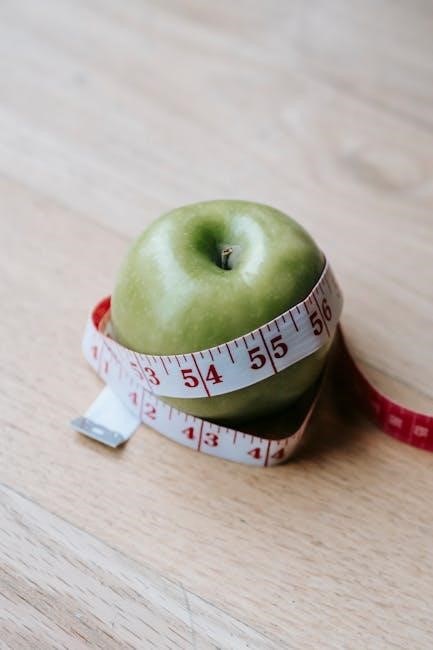A 4000 calorie bulking meal plan is designed for individuals with high energy expenditure. This could include bodybuilders in their bulking phase. Also, endurance athletes seeking to gain muscle mass. These plans provide detailed nutritional guidance. They offer structured meal and snack suggestions to achieve a daily caloric surplus.
Who Should Follow a 4000 Calorie Meal Plan
A 4000 calorie meal plan is not for everyone. It is specifically tailored for individuals with very high energy demands. Typically, this includes dedicated athletes, particularly bodybuilders during their bulking phases. It is also for those involved in intense training regimens or endurance sports. These people require a significant caloric surplus to support muscle growth and recovery.
Individuals with a naturally fast metabolism may also benefit. Also, those who struggle to gain weight despite consuming what they perceive as large meals. Before embarking on such a high-calorie diet, it’s crucial to assess your activity level and metabolic rate. Consider consulting with a healthcare professional or registered dietitian. They can provide personalized guidance based on your specific needs and goals.
It’s important to monitor your body composition and overall health. A 4000 calorie diet can lead to unintended fat gain if not carefully managed. Regular exercise and proper macronutrient balance are essential. This ensures that the excess calories are primarily used for muscle development rather than fat storage. Remember, a 4000 calorie diet is a tool for specific goals, not a general dietary recommendation.
Ultimately, those with a naturally high metabolism could benefit from a 4000 calorie meal plan. This is especially true when they are trying to bulk.

Macronutrient Breakdown for Bulking
Achieving optimal muscle growth on a 4000 calorie bulking plan requires a strategic macronutrient breakdown. Protein is crucial for muscle repair and growth. Aim for approximately 1 gram of protein per pound of body weight. For example, a 200-pound individual should target around 200 grams of protein daily. Distribute protein intake evenly throughout the day to maximize muscle protein synthesis.
Carbohydrates are the primary energy source for intense workouts. They also replenish glycogen stores. Consume complex carbohydrates like whole grains, fruits, and vegetables. These choices should make up around 40-50% of your daily caloric intake. This translates to roughly 400-500 grams of carbs on a 4000 calorie diet.
Fats are essential for hormone production and overall health. Focus on healthy fats from sources like avocados, nuts, seeds, and olive oil. Aim for 20-30% of your daily calories from fats. This equates to approximately 90-133 grams of fat. Monitor your body’s response and adjust the macronutrient ratios accordingly.
Proper planning and tracking are vital for success. Ensure you’re meeting your macronutrient targets. This promotes muscle growth while minimizing unwanted fat gain during your bulking phase.
It is important to remember that everyone is different, and you should consult a professional for specific advice on your health.
Sample 4000 Calorie Meal Plan: Overview
A sample 4000 calorie meal plan is structured to provide consistent energy and nutrients throughout the day. It typically includes five to six meals, strategically timed to support muscle growth and recovery. Breakfast is a substantial meal, often featuring oats, eggs, and protein shakes. This kickstarts metabolism and provides sustained energy.
Lunch consists of lean protein sources like chicken or fish, paired with complex carbohydrates such as brown rice or sweet potatoes. This combination fuels afternoon workouts and maintains energy levels. A pre-workout snack, such as a banana with peanut butter, provides an immediate energy boost.
Dinner mirrors lunch, focusing on protein and complex carbs. Post-workout, a protein shake helps repair muscle tissue. Additional snacks throughout the day, like Greek yogurt with fruit or a handful of nuts, ensure consistent calorie intake.
Hydration is crucial, so aim for plenty of water throughout the day. This sample plan is a template. It should be adjusted based on individual preferences and dietary needs. Remember to track your progress and make modifications as needed to optimize muscle gain and overall health.
It is important to remember that everyone is different, and you should consult a professional for specific advice on your health.

Breakfast Ideas for a 4000 Calorie Diet
Starting the day strong with a nutrient-dense breakfast is essential for a 4000 calorie bulking diet. Opt for meals that combine protein, complex carbohydrates, and healthy fats to fuel your body and kickstart muscle growth. Oatmeal is a fantastic choice. Prepare it with milk or water and add protein powder, nuts, seeds, and fruit for extra calories and nutrients.
Eggs are another versatile option. Scramble them with vegetables and cheese or make an omelet filled with lean meats and avocado. Greek yogurt is a great source of protein. Top it with granola, berries, and honey for a delicious and filling meal. Protein pancakes are a fun and tasty way to boost your protein intake. Use protein powder in the batter and add toppings like syrup, fruit, or whipped cream.
Smoothies are quick and easy. Blend protein powder, fruits, vegetables, and healthy fats like peanut butter or flax seeds. Consider adding a side of whole-grain toast with avocado for added calories and healthy fats. These breakfast ideas ensure you start your day with a calorie-rich, muscle-building meal.
Lunch Options for Muscle Gain
Lunch is a crucial meal for maintaining a consistent calorie intake and fueling muscle growth. When aiming for a 4000 calorie diet, your lunch should be substantial and packed with essential nutrients. Consider a large portion of lean protein, such as grilled chicken breast, turkey, or fish. Combine it with complex carbohydrates like brown rice, quinoa, or sweet potatoes to provide sustained energy.
Include plenty of vegetables for vitamins and minerals. A salad with mixed greens, avocado, and a vinaigrette dressing can add healthy fats and extra calories. Sandwiches are a convenient option. Use whole-grain bread and load them with lean meats, cheese, and vegetables. A hearty chili or soup with beans, meat, and vegetables can be a filling and nutritious choice. Add a side of whole-grain bread or crackers for extra carbohydrates.
Pasta dishes are also great for bulking. Choose whole-wheat pasta and pair it with a protein source like meatballs, chicken, or shrimp. Remember to incorporate healthy fats such as nuts, seeds, or olive oil to boost your calorie intake and support overall health. These lunch options provide a balanced and calorie-rich meal.

Dinner Recipes for Bulking
Dinner is the final major meal of the day, crucial for fueling recovery and muscle repair. A 4000 calorie bulking plan requires dinners that are both substantial and nutrient-dense. Consider a large serving of steak or salmon, both excellent sources of protein and healthy fats. Pair these with complex carbohydrates like roasted potatoes or quinoa to replenish glycogen stores.
Another great option is a hearty chili loaded with beans, ground beef, and vegetables. This provides a mix of protein, carbs, and fiber. Pasta dishes are also effective for hitting calorie goals. Opt for whole-wheat pasta and a protein-rich sauce with lean ground turkey or chicken. Stir-fries with brown rice and plenty of vegetables are another excellent choice.
Add tofu or chicken for protein. Don’t forget to incorporate healthy fats. Drizzle olive oil or add avocado slices to your meal. A baked chicken breast with a side of mashed sweet potatoes and steamed broccoli is a simple yet effective option. Remember to adjust portion sizes to meet your calorie needs. These dinner recipes offer a variety of flavors and nutrients.

Snack Ideas to Reach 4000 Calories
Snacks are crucial for bridging the gap between meals and ensuring you hit your 4000 calorie target. Opt for calorie-dense, nutritious options that provide sustained energy. A handful of mixed nuts is an excellent choice, offering healthy fats and protein. Trail mix, combining nuts, seeds, and dried fruit, adds carbohydrates for an extra energy boost.
Protein shakes are a convenient way to consume calories and protein quickly. Blend protein powder with milk, fruit, and nut butter for a tasty and filling snack. Greek yogurt with granola and berries provides a mix of protein, carbs, and antioxidants. A peanut butter and banana sandwich on whole-wheat bread is a classic bulking snack.
Consider adding a drizzle of honey for extra calories. Cottage cheese with fruit offers a high-protein, slow-digesting option. Hard-boiled eggs are a simple and portable protein source. A serving of beef jerky is another convenient way to increase protein intake. Don’t underestimate the power of a simple glass of whole milk or a protein bar.
Remember to choose snacks that you enjoy and that align with your dietary preferences. Plan your snacks in advance to avoid unhealthy impulse choices. These snack ideas will help you reach your 4000 calorie goal effectively.
Importance of Hydration
Maintaining adequate hydration is essential when following a high-calorie bulking diet. Water plays a crucial role in numerous bodily functions, including nutrient transport and waste removal. When consuming 4000 calories, your body requires more water to process the increased food intake. Dehydration can hinder digestion, reduce energy levels, and impair muscle function.
Aim to drink water consistently throughout the day, rather than waiting until you feel thirsty. Carry a water bottle with you as a reminder to stay hydrated. Consume water before, during, and after workouts to replenish fluids lost through sweat. Consider incorporating electrolyte-rich beverages, especially during intense training sessions.
Electrolytes help maintain fluid balance and support nerve and muscle function. Fruits and vegetables with high water content, such as watermelon and cucumbers, can also contribute to your hydration needs. Avoid excessive consumption of sugary drinks, as they can lead to dehydration and hinder your bulking goals.
Monitor your urine color to gauge your hydration level; pale yellow indicates adequate hydration, while dark yellow suggests dehydration. Prioritizing hydration will optimize your performance and overall health while following a 4000 calorie bulking plan.
Grocery List for a 4000 Calorie Bulking Plan
Embarking on a 4000 calorie bulking plan requires careful planning and a well-stocked grocery list. This list should include items rich in protein, carbohydrates, and healthy fats. Prioritize lean protein sources such as chicken breast, turkey, fish, and lean ground beef. Stock up on complex carbohydrates like brown rice, quinoa, oats, and sweet potatoes for sustained energy;
Include healthy fats from sources such as avocados, nuts, seeds, olive oil, and fatty fish. Don’t forget essential dairy or dairy alternatives like milk, yogurt, and cheese for added protein and calcium. Fruits and vegetables are crucial for vitamins, minerals, and fiber. Include a variety of colorful options like berries, bananas, spinach, and broccoli.
Consider adding calorie-dense snacks to your list, such as trail mix, protein bars, and nut butter. Stock up on pantry staples like eggs, whole-grain bread, and condiments to prepare meals efficiently. Remember to adjust quantities based on your specific meal plan and dietary preferences. Planning your grocery list helps ensure you have everything you need to stay on track with your bulking goals.
Avoid processed foods and sugary drinks, focusing on whole, nutrient-dense options to support muscle growth and overall health.
Tips for Successfully Eating 4000 Calories Daily
Consuming 4000 calories daily can be a challenge. It requires strategic planning and consistent effort. Start by gradually increasing your calorie intake to allow your body to adjust. Don’t jump straight into 4000 calories, as this can lead to discomfort and digestive issues. Focus on nutrient-dense foods that provide a high calorie count in smaller portions.
Incorporate healthy fats from sources like avocados, nuts, and olive oil to boost your calorie intake without excessive volume. Plan your meals and snacks in advance to ensure you’re consistently meeting your caloric goals. Prepare meals ahead of time to avoid relying on less healthy, convenient options when time is limited.
Consider using calorie-tracking apps or journals to monitor your intake and make necessary adjustments. Don’t be afraid to incorporate liquid calories, such as protein shakes or smoothies, to supplement your diet. Eating frequently throughout the day can also make it easier to consume a large number of calories.
Prioritize whole, unprocessed foods, but don’t be afraid to include some treats in moderation to maintain adherence. Stay hydrated to support digestion and overall health. Remember, consistency is key, so find a strategy that works for you and stick with it to achieve your bulking goals.
